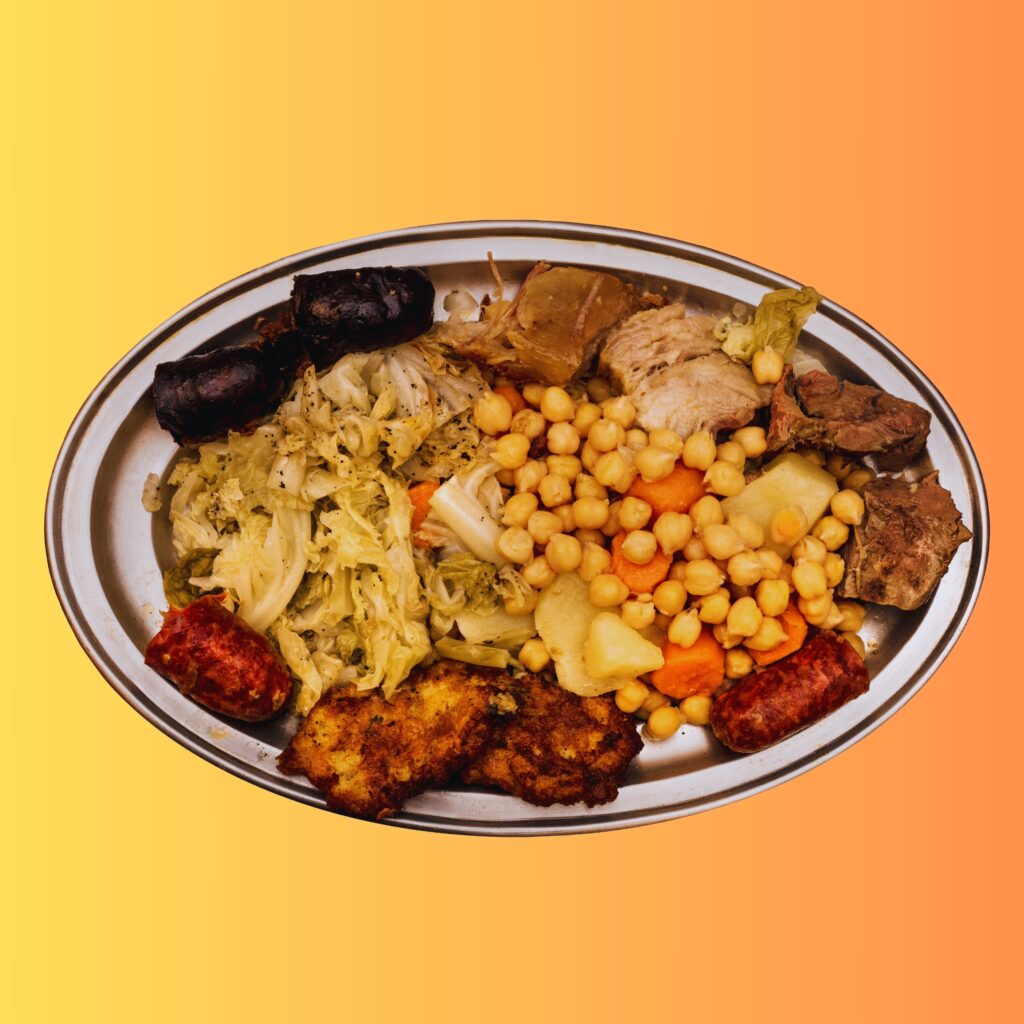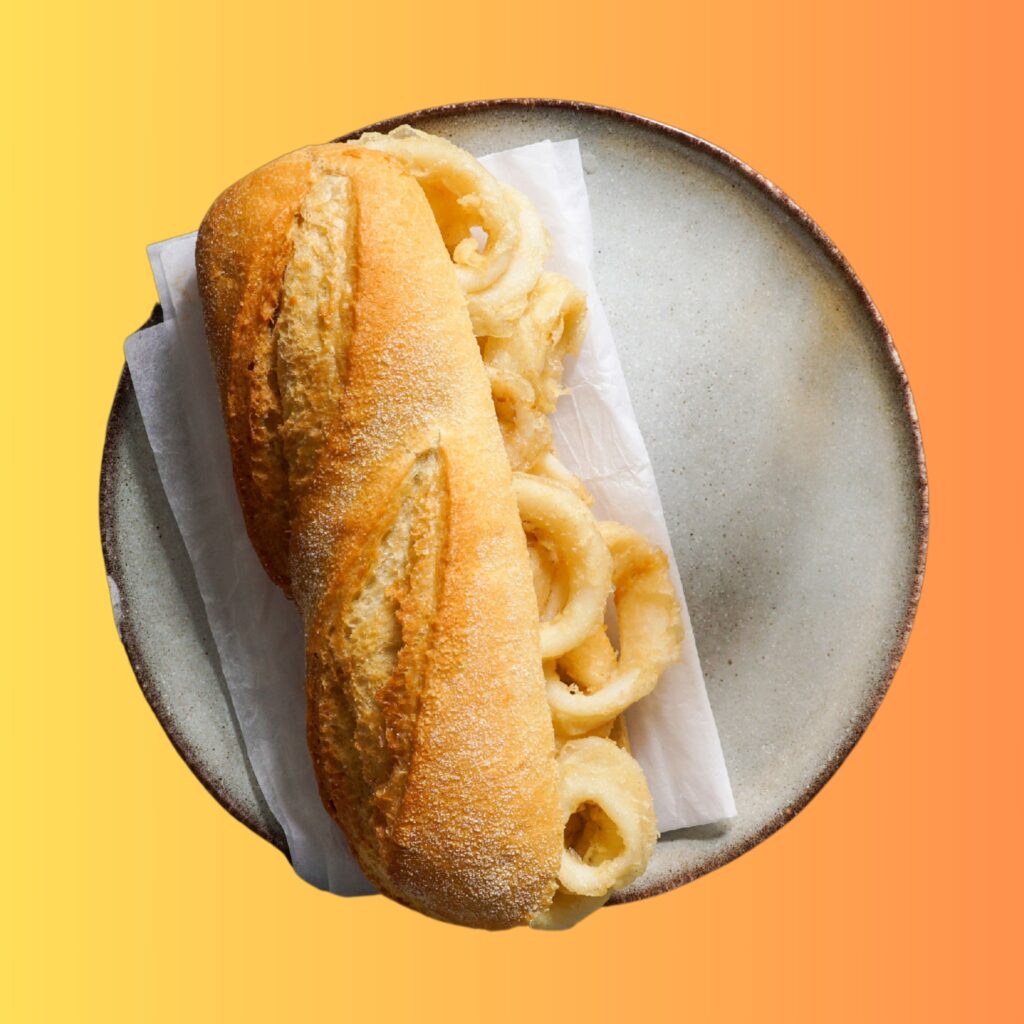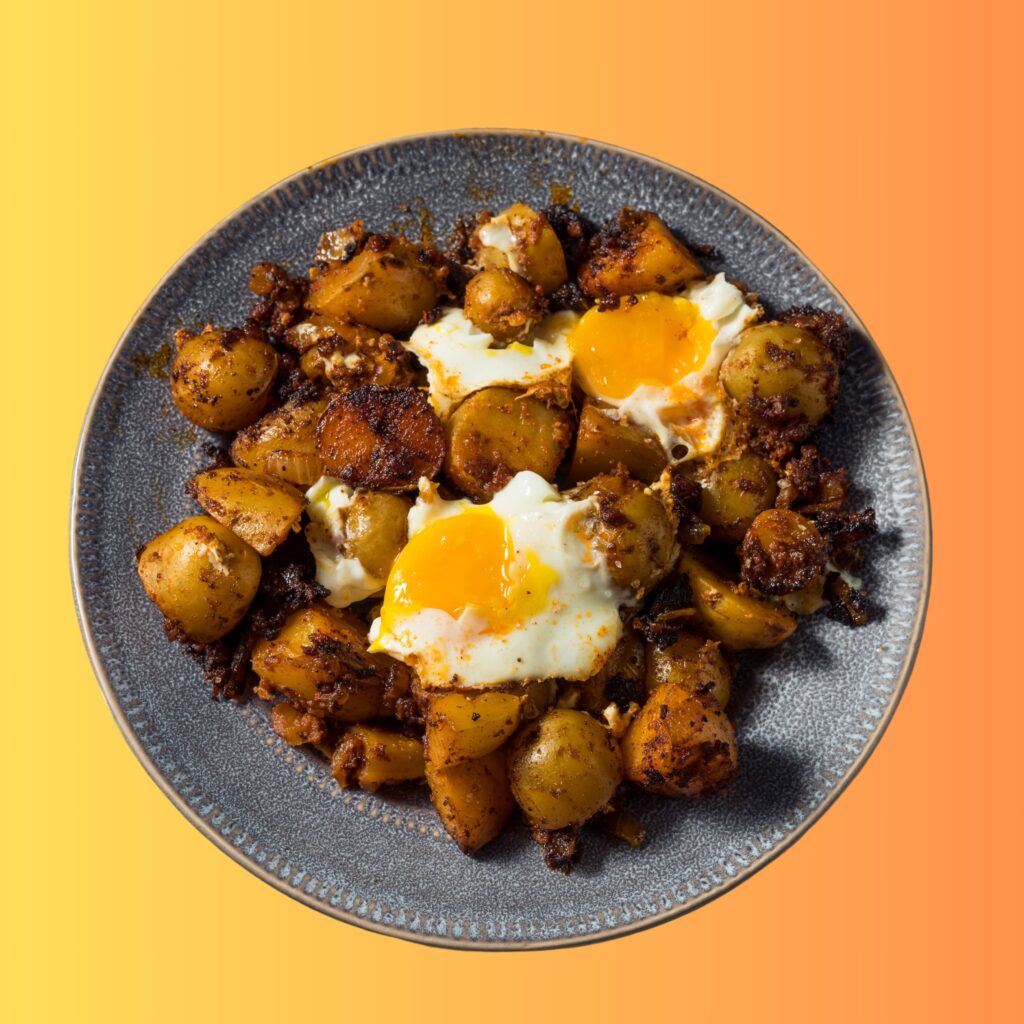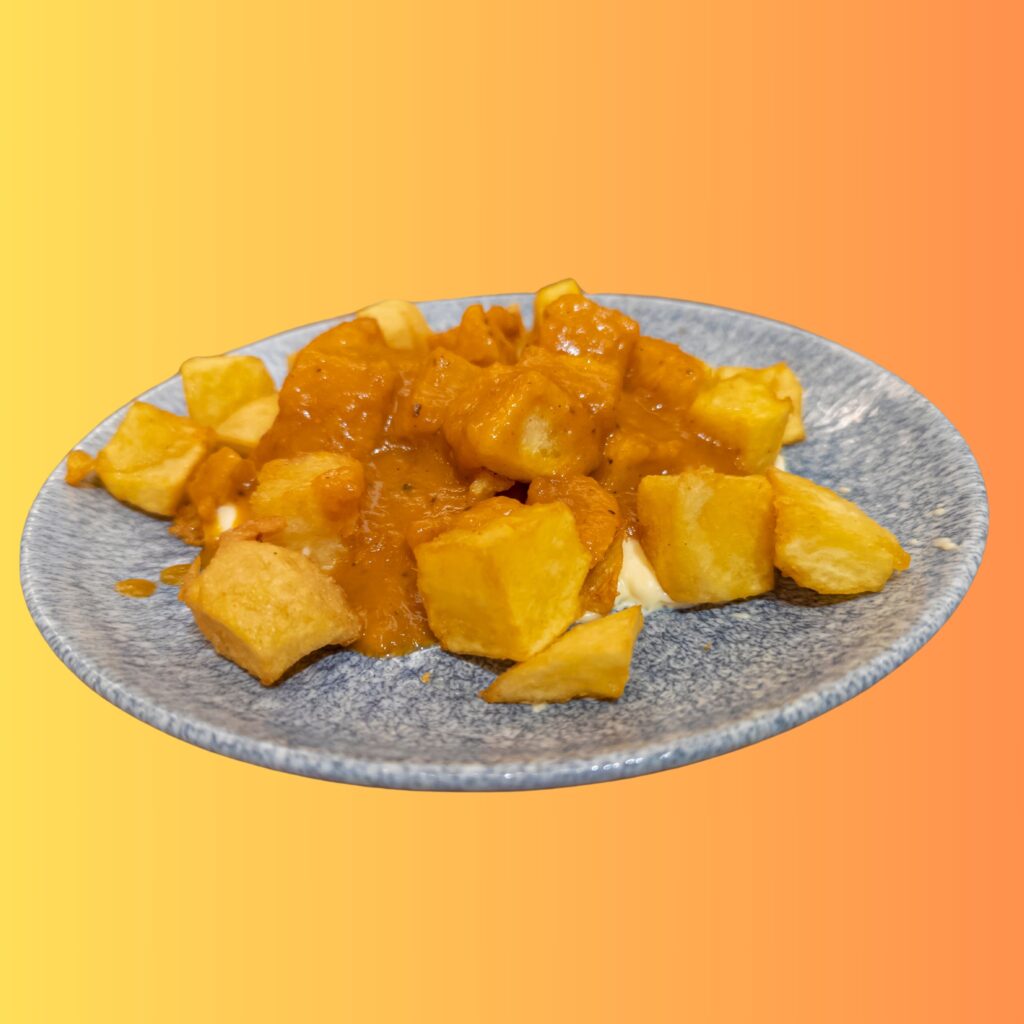Madrid, a city that has long been the political and cultural epicentre of Spain, now also stands as a culinary powerhouse, with 3 Michelin-starred temples of modernist gastronomy rubbing shoulders with tightly packed tapas bars where you, erm, can’t help but rub shoulders with fellow food aficionados.
Here, the gastronomic landscape is as intricate as the masterpieces that adorn the walls of the Museo del Prado, each dish a brushstroke on the capital’s vibrant canvas.
As the city awakens to the clatter of morning commutes and the golden hue of sunrise kissing the grand facades, there’s a knowing cleverness in the way Madrileños embrace their day. It begins, perhaps, with a breakfast steeped in tradition, a nod to the city’s culinary and cultural past. This is a place where the echoes of history are heard not just in the reverent halls of grand monuments but also in the bustling bars and historic taverns where the city’s heart truly beats.
From the hearty embrace of Cocido Madrileño to the maritime whisper of Bocadillo de Calamares, all the way to the layered legacy of Tortilla Española and the sweet embrace of Churros con Chocolate, Madrid’s dishes are a dialogue between the ages—a culinary conversation that has been ongoing for centuries. Each recipe is a testament to survival, innovation, and celebration, a reflection of the city’s spirit.
With all that mind, here’s the food that Madrid is most famous for, and some suggestions on where you might find the best version in Spain’s capital city.
Cocido Madrileño – The Quintessential Madrid Stew

What it is: Cocido Madrileño is a traditional chickpea-based stew that is synonymous with Madrid’s culinary identity (the name literally translates as ‘Madrid Stew’). It’s a hearty dish that combines vegetables, meats, and sausages, cooked slowly to perfection.
The History: Cocido Madrileño is not just a dish; it’s a gastronomic event. With roots in the Sephardic Jewish ‘adafina’ and the Christian ‘olla podrida’, this chickpea-based stew evolved in Madrid during the 17th century. It was a practical solution for a filling meal that could be cooked over a low flame, undisturbed, while observing the Sabbath.
The Tradition: The dish is traditionally served in ‘vuelcos’ or turns – first the broth, followed by the chickpeas and vegetables, and finally the meat. It’s a communal feast that embodies the warmth of Madrid’s hospitality.
Where to eat it: For an authentic Cocido experience, visit La Bola tavern, a family-run establishment that has been serving this dish since 1870, using the same traditional recipe and cooking method – in individual clay pots over oak charcoal.
Bocadillo de Calamares – The Madrid Street Food Staple

What it is: This simple yet delicious sandwich consists of fried squid rings served in a crusty baguette. It’s a popular snack that Madrileños enjoy at any time of the day.
The History: Despite Madrid’s landlocked location, the Bocadillo de Calamares is a testament to the city’s historical trade links. In the 20th century, railways began to bring fresh seafood from coastal regions to Madrid’s tables, and the calamari sandwich quickly became a beloved staple.
The Tradition: This simple yet iconic sandwich is a symbol of Madrid’s bustling street life, often enjoyed on sunny terraces or as a quick bite at bustling bars.
Where to eat it: Head to Casa Rúa or El Brillante near the Atocha station to try one of the best Bocadillo de Calamares in Madrid. Both places are renowned for their fresh, crispy calamari and lively atmosphere.
Read: 8 places to eat the best fried calamari and chipirones in London
Tortilla Española – The Spanish Omelette

What it is: Also known as Tortilla de Patatas, this is a classic Spanish omelette made with eggs, potatoes, and onions. It’s a staple in Madrid’s food scene, served either warm or cold.
The History: The Tortilla Española, or Spanish omelette, is a humble masterpiece with disputed origins. Some say it was a cost-effective recipe during the Carlist Wars, while others claim it was a creation of a humble housewife. Regardless, it has been a part of Madrid’s culinary soul since the 19th century.
The Tradition: In Madrid, the tortilla is a ubiquitous presence at family gatherings, tapas bars, and even picnics in the Retiro Park. It’s a dish that unites, a common denominator in the city’s diverse food scene.
Where to eat it: Juana La Loca in La Latina neighbourhood offers a modern twist on the traditional tortilla, with an oozing centre that is the source of much debate in the capital.
Huevos Rotos – The Comfort Food Classic

What it is: Huevos Rotos or ‘broken eggs’ is a dish consisting of fried eggs over a bed of potatoes, often accompanied by ham or chorizo. It’s a simple yet satisfying meal.
The History: Huevos Rotos is a relatively modern invention, a dish that gained popularity in the mid-20th century. It’s said to have been a happy accident, a dish born from the necessity of using leftover potatoes and combining them with eggs to create a filling meal.
The Tradition: Today, it’s a staple in Madrid’s casual dining, a dish that’s both comforting and adaptable, often topped with luxurious extras like Iberian ham or chorizo.
Where to eat it: Casa Lucio is famous for its Huevos Rotos, attracting celebrities and food lovers to this day. The key to their success is the quality of ingredients and the perfect runniness of the eggs.
Oreja a la Plancha – For the Adventurous Palate
What it is: Grilled pig’s ear is a delicacy in Madrid. Usually seasoned with salt and paprika, it has a unique texture and more-ish quality that makes it the perfect beer snack.
The History: Oreja a la Plancha has its roots in Madrid’s working-class neighbourhoods, where nothing went to waste. Pig’s ear, a byproduct of the matanza (pig slaughter), became a popular tapa, showcasing Madrid’s no-nonsense approach to food.
The Tradition: Served in old-school taverns and modern gastrobars alike, the dish represents Madrid’s no-waste philosophy. Grab a toothpick and get eating!
Where to eat it: Casa Toni is a no-frills bar in the Sol neighbourhood where locals go for the best Oreja a la Plancha. It’s crispy on the outside and tender on the inside.
Callos a la Madrileña – Elevating The Humble

What it is: This is a traditional tripe dish cooked with chorizo, morcilla (blood sausage), and bell peppers. It’s a rich and spicy dish that reflects Madrid’s love for bold flavours.
The History: Callos a la Madrileña dates back to the 16th century, a time when offal was often the only meat available to the poor. Over time, it became a symbol of Madrid’s resilience and ability to create rich, flavourful dishes from humble ingredients.
The Tradition: This tripe stew, simmered with chorizo and morcilla, is a winter favourite, a dish that has warmed the bellies and hearts of Madrileños for generations.
Where to eat it: Taberna de la Daniela serves a superb Callos a la Madrileña, staying true to the recipe that has been passed down through generations. You’ll find four branches in Madrid now, owing to its undeniable quality.
Patatas Bravas – The Spicy Tapas Favourite

What it is: Patatas Bravas are fried potato cubes topped with a spicy tomato sauce and sometimes aioli. It’s one of the most common tapas dishes, found throughout Madrid and beyond.
The History: The exact origins of Patatas Bravas are murky, but it’s widely accepted that this dish emerged in the mid-20th century. It was a time when Madrid was looking to assert its identity, and the bold, spicy sauce over simple fried potatoes became an instant classic.
The Tradition: Patatas Bravas are now a staple of Madrid’s tapas scene, a dish that embodies the city’s love for life with its punchy flavours.
Where to eat it: Las Bravas is said to be the birthplace of this dish, offering their secret sauce recipe that has remained unchanged since 1933. There are now several branches across the city.
Besugo a la Madrileña – The Celebratory Fish Dish
What it is: Besugo a la Madrileña is a baked sea bream dish typically seasoned with garlic, olive oil, and vinegar. It’s a festive dish often served during Christmas.
The History: Besugo, or sea bream, was historically a luxury, reserved for special occasions. The dish became associated with Christmas in Madrid, a centrepiece at celebratory meals.
The Tradition: Besugo a la Madrileña, baked with a marinade of garlic, olive oil, and vinegar, continues to be a dish that signifies celebration, family, and the joy of shared meals.
Where to eat it: Casa Benigna is renowned for its oven-baked fish dishes, including the Besugo a la Madrileña. The fish is sourced daily, ensuring freshness and quality.
Churros con Chocolate – The Sweetest Final Indulgence
What it is: Churros are fried-dough pastries, often enjoyed dipped in thick, hot chocolate. They are a typical Madrid treat, especially after a night out or for breakfast.
The History: The origin of churros is a tale steeped in legend and lore. Some say they were brought to Europe by the Portuguese from China, while others believe Spanish shepherds created them as an easy-to-cook bread substitute in the mountains. What is certain, however, is that by the 19th century, churros had found their way into the heart of Madrid’s culinary scene, becoming a beloved treat for all social classes.
As opposed to the traditional dulce de leche sauce served in Mexico, the addition of chocolate to the equation is a uniquely Spanish twist, with Madrid laying claim to this indulgent pairing. The thick, hot chocolate served in Madrid is not for drinking through a straw but rather a rich concoction designed for dipping, turning the humble churro into a luxurious treat.
The Tradition: Churros con Chocolate has transcended its origins to become a symbol of Madrid’s gastronomy. It’s a social ritual, a reason for friends and families to gather and share moments of joy. Whether it’s for breakfast, an afternoon snack, or a late-night treat after a night on the town, churros con chocolate is a Madrid staple.
In the chill of the early morning, Madrileños might stop by a ‘churrería’ for a serving of freshly made churros, their crisp golden exteriors giving way to a tender, airy inside, perfect for soaking up the velvety chocolate. It’s a moment of simple pleasure, a sweet pause in the rush of city life.
Where to eat it: Chocolatería San Ginés is a historic spot that has been serving churros since 1894. Open 24/7, it’s the perfect place to satisfy your sweet tooth at any hour.
The Bottom Line
Whether you’re savouring Cocido in a historic tavern or biting into a Bocadillo de Calamares under the Madrid sky, you’re partaking in a tradition that has been shaped by centuries of history. So, when in Madrid, eat as the Madrileños do, and let the city’s culinary heritage become a part of your own story.
Remember, the key to enjoying Madrid’s cuisine is to do as the locals do: take your time, savour each bite, and immerse yourself in the convivial dining culture of Spain’s capital. ¡Buen provecho!





